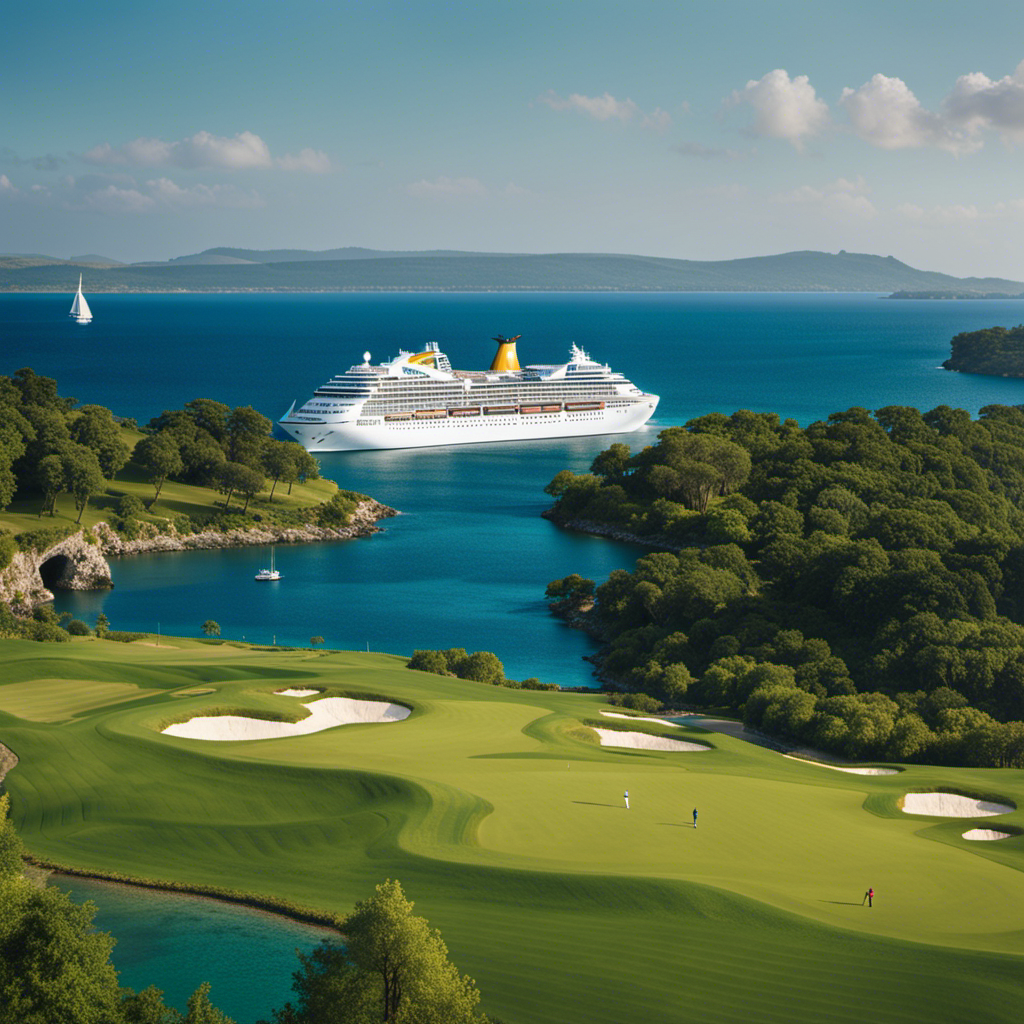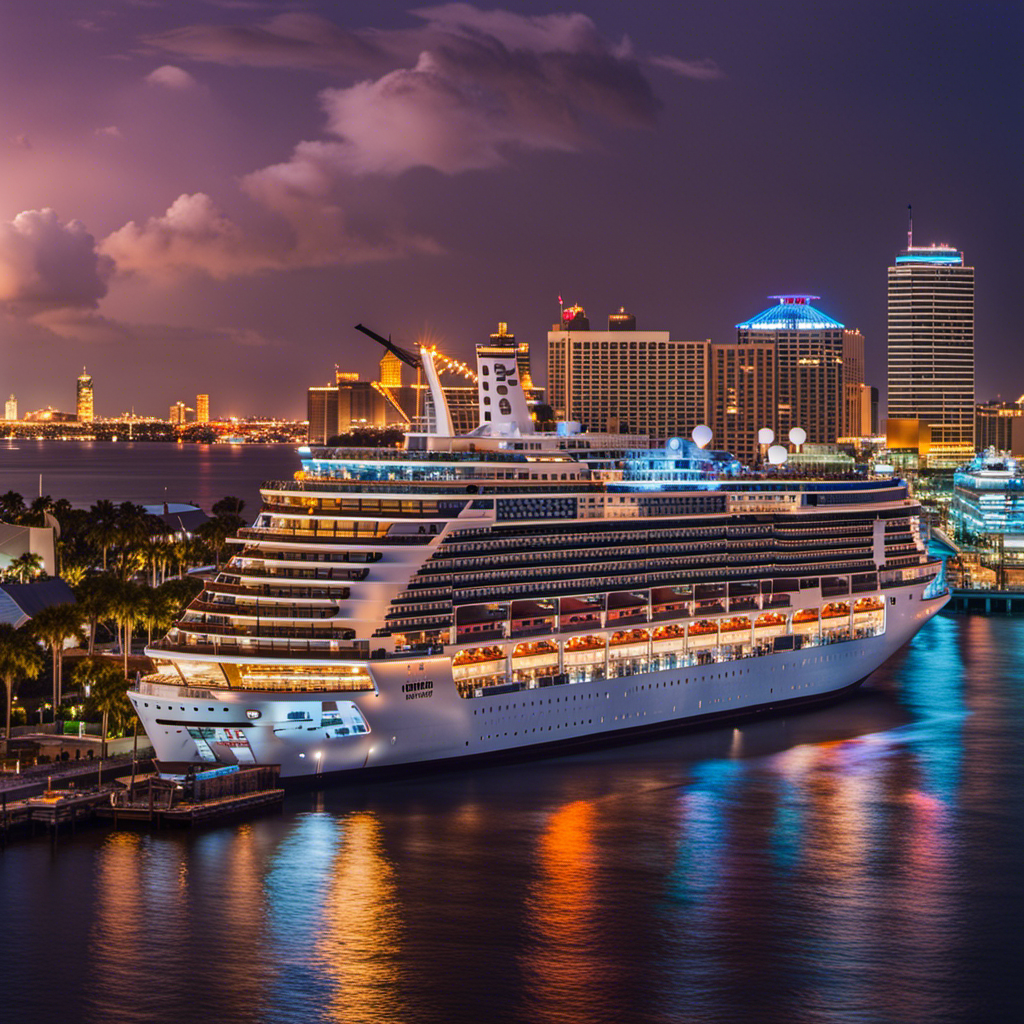As I gazed out from the deck of a majestic cruise ship, it struck me how important it is to grasp the terminology used in relation to ships.
It was a breathtaking sight, with the bow cutting through the water and the stern stretching out behind me. I knew that in emergencies, this knowledge could be a matter of life and death.
As I gazed at the bulbous bow, I marveled at how it aided in the ship’s efficiency by parting the water. It became clear to me that knowing the directional terms of forward and aft, as well as port and starboard, was essential for navigation. These terms, fixed and unchanging, determine the ship’s left and right sides relative to the bow.
In emergencies, being able to swiftly locate muster stations and lifeboats could mean the difference between safety and chaos. With this in mind, I embarked on a journey to explore the importance of ship terminology in navigating a cruise ship.
Key Takeaways
- Understanding ship terminology is crucial for navigation and emergency situations on a cruise ship.
- The bow, stern, forward, aft, port, and starboard are important directional and physical parts of a ship.
- Knowing the difference between port and starboard is essential for navigation and identifying stateroom locations.
- Ship terminology plays a significant role in safety, emergency preparedness, and finding muster stations and lifeboats.
Understanding Ship Parts
I already know that the bow and stern are important parts of a ship, and understanding their roles is crucial for navigating a cruise ship.
The bow, which is the frontmost part of the ship, is often made of steel and comes to a point. It serves as the leading edge of the vessel, cutting through the water.
On the other hand, the stern is the rearmost part of the ship and is opposite of the bow. It plays a significant role in steering and propulsion.
Additionally, modern ships often have a bulbous bow, a bulb-like protrusion on the front, which helps in parting the water and making the vessel more efficient.
Understanding these parts of a ship is essential for safely maneuvering through the water and ensuring a smooth cruise experience.
Directional Terms
Understanding the directional terms on a vessel is crucial for effective communication and navigation. When onboard a cruise ship, it’s essential to learn and use ship terminology to ensure efficient navigation and effective communication with the crew. Here are four reasons why learning and using directional terms is important for communication on a cruise ship:
-
Safety: During emergencies, clear communication is vital for the safety of all passengers and crew. Using directional terms such as port, starboard, bow, and stern helps convey precise information about locations and directions.
-
Efficient Navigation: By understanding ship terminology, passengers can easily navigate their way around the ship, finding their staterooms, dining areas, and entertainment venues without confusion or delay.
-
Crew Coordination: The crew relies on directional terms to coordinate tasks and efficiently carry out their duties. Using consistent and accurate language ensures smooth operations on the ship.
-
Enhancing the Cruise Experience: By familiarizing themselves with directional terms, passengers can fully appreciate the ship’s layout and enjoy the various amenities and activities on board.
By utilizing ship terminology and understanding directional terms, passengers can enhance their cruise experience while also ensuring their safety and efficient communication throughout the voyage.
Importance in Emergencies
Knowing ship terminology is crucial during emergencies as it enables clear communication and precise location identification for the safety and well-being of all passengers and crew. Understanding terms like bow, stern, forward, aft, port, and starboard can make a significant difference in emergency preparedness.
In a crisis situation, being able to quickly and accurately convey information about the location of muster stations, lifeboats, or other crucial areas of the ship can save valuable time and potentially lives. Additionally, knowing ship terminology allows for effective coordination and organization among the crew, ensuring a swift response to emergencies.
By familiarizing oneself with these terms, passengers can better navigate the ship and follow instructions during critical situations. Ultimately, the benefits of knowing ship terminology during emergencies cannot be overstated, as it plays a vital role in the overall safety and security of everyone on board.
Frequently Asked Questions
What are some common safety protocols to follow while navigating a cruise ship?
When it comes to navigating a cruise ship, following common safety protocols is crucial. It is important to be familiar with ship terminology to ensure a safe journey. One common safety protocol is to always wear a life jacket during emergency situations. Another important protocol is to know the location of the muster stations and lifeboats, which can be identified using ship terminology such as port and starboard. By following these protocols and understanding ship terminology, passengers can ensure their safety and be prepared for any emergencies that may arise.
Are there any specific regulations regarding the use of port and starboard signs on a cruise ship?
Specific regulations regarding the use of port and starboard signs on a cruise ship ensure consistent and clear identification of stateroom locations. These signs play a crucial role in navigation and emergency situations, promoting safety and efficiency on board.
How can passengers locate their assigned muster stations in case of an emergency?
Passengers can locate their assigned muster stations in case of an emergency by referring to their emergency information guide or consulting the ship’s crew. This is crucial for passenger safety and to ensure proper adherence to emergency procedures.
Are there any specific guidelines for passengers on where they should stand or move during an emergency situation?
During an emergency, it’s crucial for passengers to follow the ship’s emergency protocol to ensure their safety. Guidelines will be provided by the crew on where to stand or move, so it’s important to listen and comply.
Can you provide examples of real-life emergency situations where knowledge of ship terminology played a crucial role?
Real life emergency situations where knowledge of ship terminology played a crucial role include directing passengers to muster stations and lifeboats, guiding emergency responders to specific areas, and ensuring effective communication during evacuations. The importance of ship terminology in emergency situations cannot be overstated.
Conclusion
In conclusion, grasping the intricacies of ship terminology is like unlocking a hidden treasure chest of knowledge. By understanding the bow, stern, forward, aft, port, and starboard, one gains the power to navigate the vast ocean with confidence and precision.
Just as a skilled captain uses these terms to steer the ship through treacherous waters, so too must we embrace the language of the sea to ensure our safety and preparedness during emergencies.
So, let’s embrace the power of ship terminology, for it’s the compass that guides us to a world of maritime mastery.










